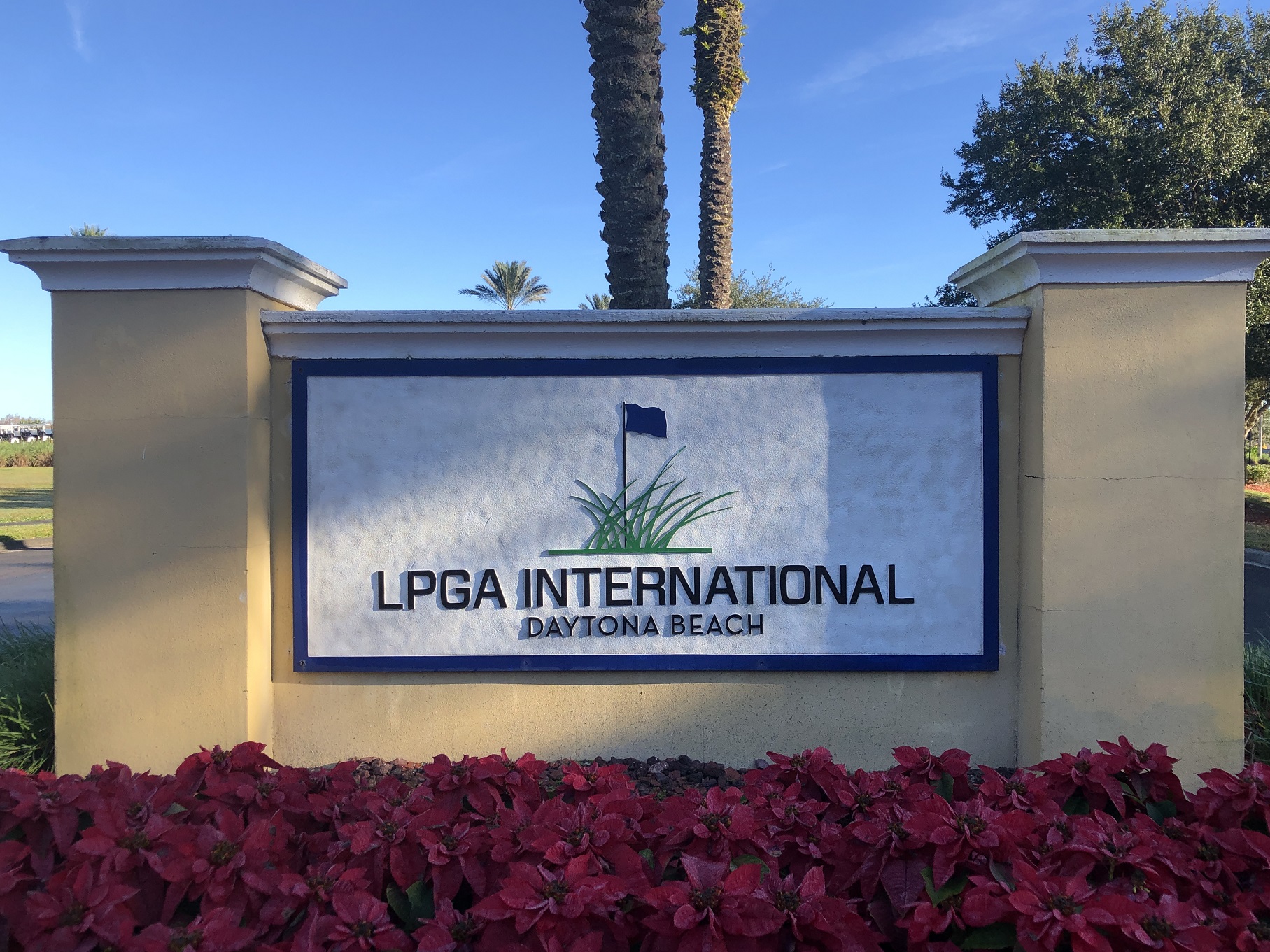I was up early on Sunday for a round of golf and time at the beach. My plan was to golf, spend a couple hours at the beach and have a nice seafood dinner. I booked a tee time for 9:30 AM on the Jones Course at LPGA International which meant leaving The Villages about 7:00 AM. It was a long day, but everything went according to plan. Dinner at the Chart House was excellent!
Last year a friend and I played the Hills Course so this time around I wanted to check out the Jones Course. The Jones Course was designed by Rees Jones and opened in 1994. It was the first course here at LPGA International, with the Hills Course opening later, in 1998. After playing both courses I’ll say there are big differences between the two.
The Jones Course is a residential design – with a links look to it – and has large driving areas/big greens. In comparison, the Hills Course is routed through the coastal wetlands and features many tree-lined holes and plenty of target golf. I wouldn’t call the Jones Course “easy”, but the wider fairways should give you a chance to score. On the other hand, the Hills Course, with its 150 slope from the back tees, is tough everywhere.

One of the distinguishing things about the Jones Course is that it hosts the Symetra Tour Championship most Octobers. I always enjoy an opportunity to play where the pros play and today was no exception. There is some nice memorabilia in the clubhouse which pays tribute to the event and the players. I’ve never been out to watch the tournament, but there is the possibility for an exciting finish with the course’s strong closing holes.
I played the blue tees (72.5/137/6644) and enjoyed the mix of challenge and forgiveness. I think it is a sneaky good course that is aesthetically pleasing. The course felt like it was designed for the pros, meaning that there is a lot of space for fans and a wayward tee shot. The Jones Course is a second shot golf course, with the approach shots being the most important shots for scoring. This style of course usually fits my game!
The most difficult thing about the round here is going to be all the water. Water comes into play on about half the holes and the first two holes give you an idea of what to expect for the rest of the round. The 1st has water all down the left side and tons of room to the right. The 2nd has water to the right off the tee, but tons of space to the left. Somehow I managed to make it the entire round without losing a ball. So if you know what you are doing, or get lucky (like me), then a good round can be had.

My favorite holes on the front nine were the 5th and 6th which are on opposite sides of a lake. The 5th is a risk/reward par-5 that is 508 yards from the blue tees. The tee shot can be played out to the left for safety or along the water to the right in hopes of getting to the green in two shots. The 6th is a 150 yard par-3 that has a nice look to it. On the back nine the last four holes, including the 17th and 18th, are good finishing holes. The 17th is another par-3 over water and the 18th is a long, tough par-4 (436 yards).
The Jones Course was in good shape. I paid $77 and thought the conditions reflected the price. There are a few deals to be found if you aren’t picky about the time you play. The fairways and tees were full. The greens were near perfect and rolled at a medium pace. The area must have received a lot of rain recently because the ground was soft and the sand in some bunkers was heavy and wet.
For the price this time of year, I don’t think a round on either course at LPGA International can be beat. I’d recommend both courses if you are in the area visiting. I prefer the Jones Course because of its better playability, but I’m sure others prefer the natural setting of the Hills Course.
Course Pictures (click any picture to scroll through the gallery):
